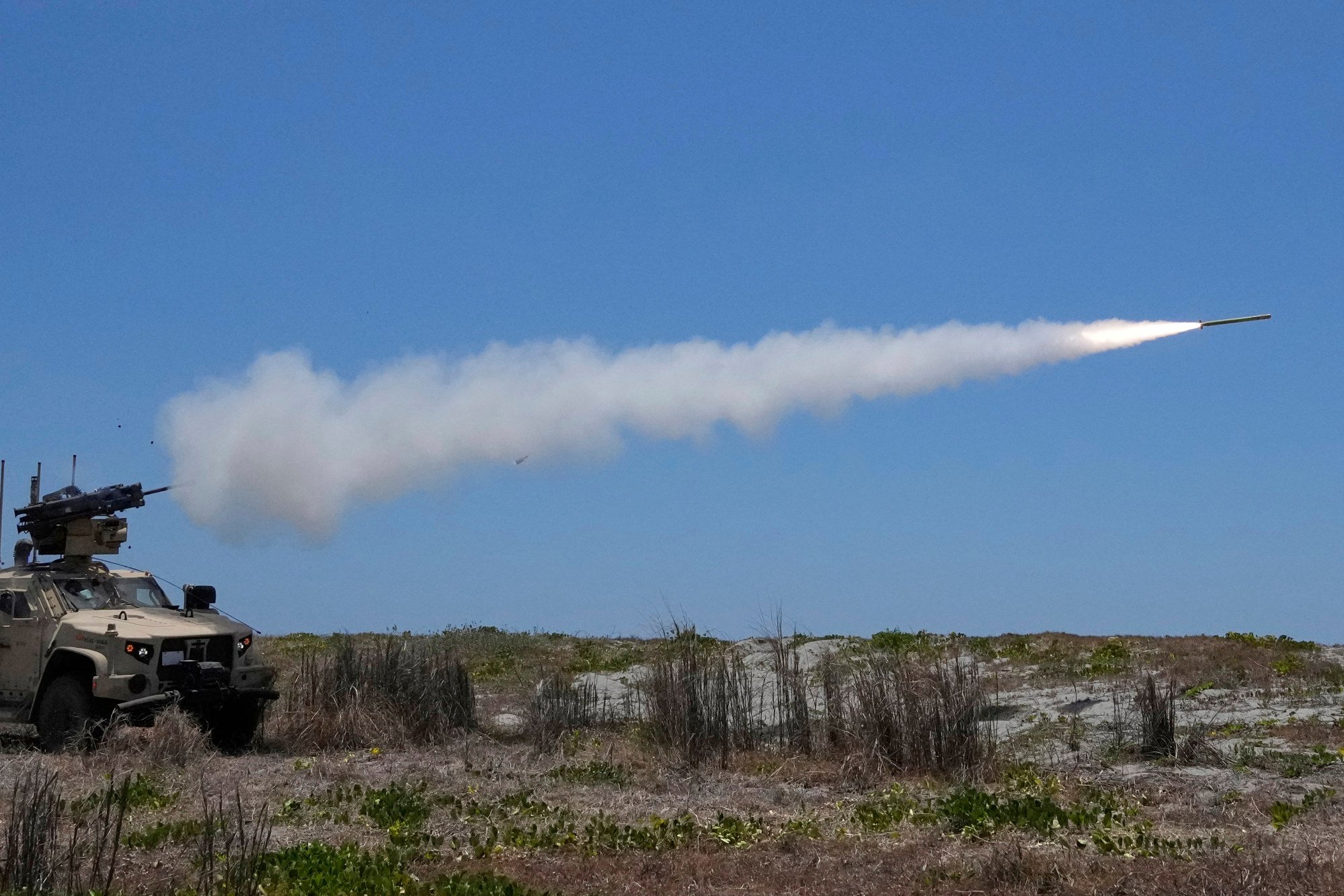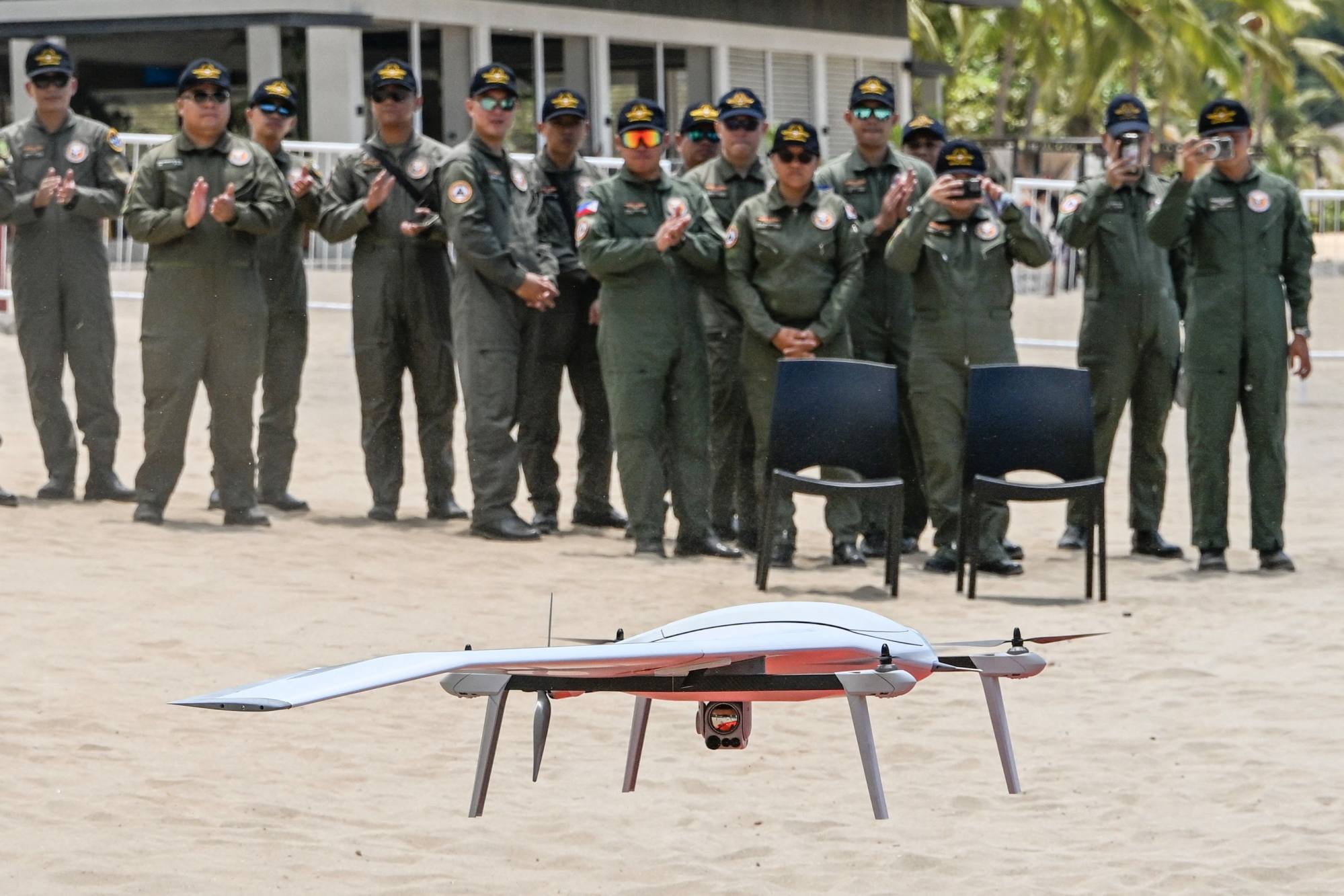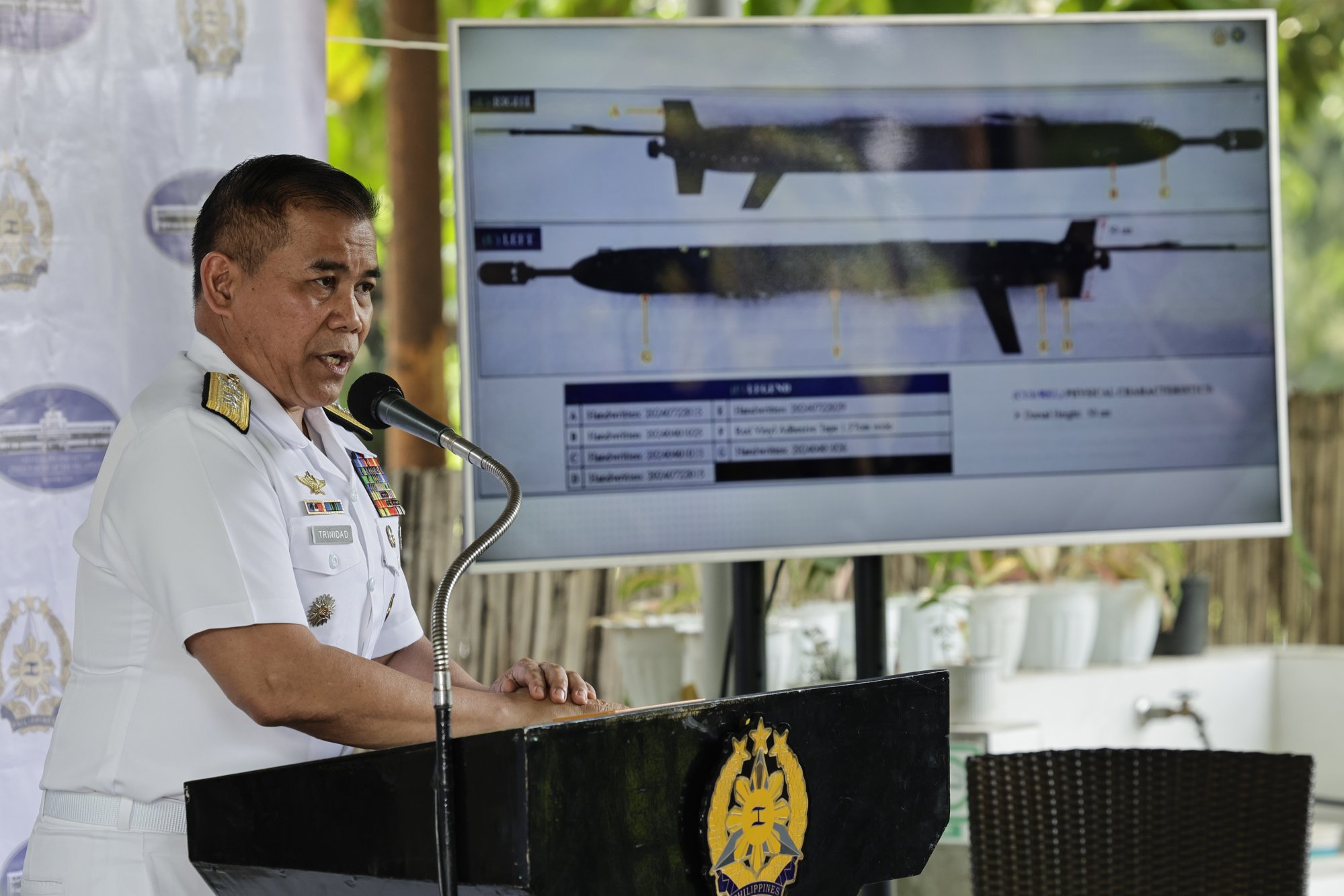Philippines aims to counter China’s drone swarm capacity, learn from Ukraine war
Its military says drones armed with explosives or used for surveillance have become a focus of joint exercises with allies such as the US

The Philippine military is ramping up efforts to enhance its drone offensive capabilities and countermeasures amid growing concerns over China potentially using waves of such unmanned aircraft to assert its claims in contested waters.
As part of this push, Philippine and US forces recently tested high-powered microwave weapons during the Balikatan 2025 exercises, designed to neutralise so-called drone swarms.
The Philippine military has also begun using Israeli-made intelligence, surveillance and reconnaissance (ISR) drones in field operations and unmanned surface vessels in the South China Sea.
Colonel Louie Dema-ala, spokesman for the Philippine army, said drones armed with explosives or used for surveillance – such as those deployed in the war in Ukraine – had become a focus of Manila’s joint military exercises with foreign partners, particularly the US.
“These are all part of subject matter expert exchanges to train our personnel on these new technologies,” he told the Philippine News Agency last month.
“It has always been the plan of the army to be responsive to these new threats and to be cross-domain capable,” he added.
The Philippine army currently operates ISR platforms such as the Israeli-made Elbit Skylark – a lightweight, hand-launched drone used for real-time battlefield monitoring – and the Thor, a compact vertical take-off and landing drone designed for urban and maritime reconnaissance.

The navy has also begun trials of US-supplied unmanned surface vessels, including the MANTAS T-12, a remotely operated craft that can patrol coastal waters and provide real-time surveillance data.
The air force is deploying mobile radar systems from Japan and the Israeli-made SPYDER-MR air defence system, which uses radar-guided missiles to intercept aircraft and drones.
Analysts, however, warn that the Philippine military still lacks a cohesive doctrine to counter the threat of drones and other unmanned weapons. Its full potential in this area is being undercut by poor planning, reliance on foreign suppliers and limited local innovation, according to the analysts.
Sylwia Monika Gorska, a political analyst and defence researcher, said the Philippine military’s use of advanced tools such as high-powered microwaves in the Balikatan drills underscored its determination to adapt to drone warfare. But she added: “What we see is a pattern of fragmented innovation … systems are being introduced across all branches, but doctrinal integration remains limited.”
For instance, there was a lack of coordination linking drone and counter-drone operations across the military, Gorska said. Without proper planning across the services, the full potential of the drone investments remained unrealised, she added.
While the Subic Bay airfield has served as a forward hub for drone operations in the South China Sea, a national drone strategy to fully leverage the former US naval base and other facilities remains elusive, according to analysts.

“There is no comprehensive military-wide operational concept for counter-drone activity that synchronises planning, data-sharing, and command structures across services,” Gorska said.
The push by the Philippine military in the drone domain comes amid fears that the Chinese military is stepping its capacity to launch drone swarms – the deployment of dozens or even hundreds of such devices at the same time to overwhelm an enemy’s defence.
Chester Cabalza, president of the Manila-based think tank International Development and Security Cooperation, described the advent of drone swarms as alarming and warned that they could play a crucial role in a future conflict in the South China Sea.
Beijing views self-ruled Taiwan as part of its territory, and President Xi Jinping has reportedly instructed the Chinese military to be ready for an invasion of the island by 2027.
Any such operations conducted by China in maritime areas near the Philippines would likely involve drone assaults across multiple domains, according to analysts.
Cabalza said most of the drones that the Philippine military possessed were based on Israeli technology. He added that Manila must invest more in countering China’s submersible drones, given their capacity to map Philippine seabeds and underwater energy sources.

Several analysts say some of the investments should be directed towards boosting the capabilities of the Philippine drone industry.
Noting how drones were a lower-cost and flexible option for the Philippine military to counter external threats, Lucio Blanco Pitlo III, president of the Philippine Association of Chinese Studies, said: “We have to look into acquiring something that is already there while at the same time finding ways to build our own.”
Gorska agreed, saying the momentum from large-scale joint exercises must be backed by sustained investment in local innovation. She noted that domestic research and development in the local drone sector had been overlooked, with no dedicated programme to develop home-grown systems to counter drones.
Since last year, the Philippines has recovered at least five drones with Chinese markings from its waters, suspected to have been used for surveillance or data gathering.
To defend against these threats, the Philippine military had begun learning the lessons from the conflict in Ukraine, where drones and electronic jamming had played a major role, Gorska said.
“This demonstrates an emerging awareness that drone threats are multi-domain. Unmanned systems are not stand-alone tools, but part of a broader offensive ecosystem,” she added.